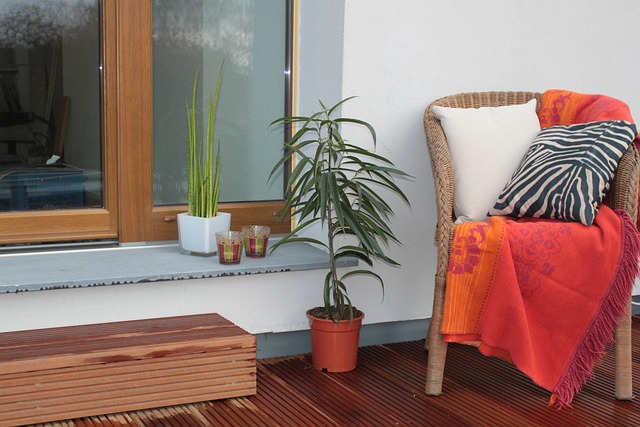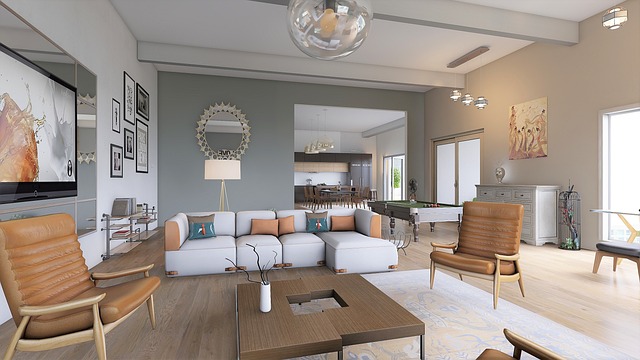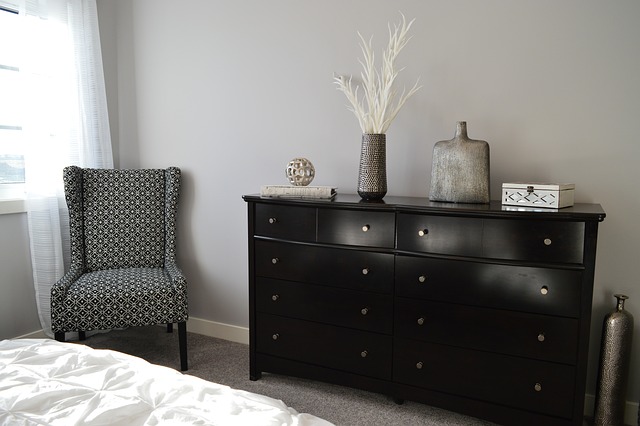Maximizing Seating: How Many Chairs Can Fit in a Round Table?
11 min read
Maximizing seating capacity around a round table is a crucial consideration when it comes to efficiently utilizing space and accommodating guests in various settings, ranging from dining establishments to conference rooms and social events. Determining the optimal number of chairs that can fit around a round table involves considering several factors, such as the table’s diameter, the desired spacing between chairs, and the overall layout requirements. In this article, we explore the art of maximizing seating and delve into the technical aspects of determining how many chairs can comfortably fit around a round table.
- Understanding the Round Table Geometry:
To embark on the journey of maximizing seating, we must first understand the geometric properties of a round table. A round table is characterized by its diameter, which is the distance between two points on its circumference, passing through its center. This measurement plays a crucial role in calculating the seating capacity. - Establishing the Optimal Spacing:
To ensure a comfortable and functional seating arrangement, it is essential to establish an optimal spacing between chairs. This spacing not only considers the physical dimensions of the chairs but also accounts for the space required for individuals to move around the table freely. The commonly recommended spacing ranges from 24 to 30 inches (61 to 76 centimeters) per chair, depending on the specific context and furniture design. - Applying the Chair-to-Table Ratio:
The chair-to-table ratio is a fundamental concept used to estimate the maximum number of chairs that can be accommodated around a round table. By dividing the table’s circumference by the desired spacing, we can approximate the number of chairs that can fit. For example, if a table has a circumference of 120 inches (305 centimeters) and a spacing of 24 inches (61 centimeters), the chair-to-table ratio would be 5 (120 ÷ 24 = 5). This means that approximately five chairs can be placed around the table while maintaining the desired spacing. - Considering the Table Base and Legroom:
While determining the seating capacity, it is crucial to account for the table’s base and legroom requirements. Round tables come in various designs, including pedestal bases, legged bases, and central support columns. These structural elements may affect the placement of chairs and the available legroom for seated individuals. Optimizing the chair layout should consider the specific table design to ensure comfort and functionality. - Balancing Aesthetics and Practicality:
While maximizing seating capacity is important, it is equally vital to strike a balance between aesthetics and practicality. Overcrowding the table with chairs can compromise the overall visual appeal and make it challenging for individuals to access their seats comfortably. By considering the desired atmosphere and the overall size of the space, one can optimize the chair arrangement to achieve both an appealing aesthetic and maximum seating capacity.

What Factors Influence the Seating Capacity of a Round Table?
When it comes to maximizing seating arrangements, understanding the factors that influence the seating capacity of a round table is essential. By considering various technical aspects, one can optimize the seating arrangements and accommodate a larger number of guests. In this article, we delve into the factors that impact the seating capacity of a round table, offering valuable insights for event planners, interior designers, and anyone seeking to create efficient seating arrangements.
- Diameter of the Tabletop:
The diameter of a round table is a crucial factor that directly affects the seating capacity. As the diameter increases, the table offers more surface area, allowing for additional chairs to be placed around it. A larger tabletop diameter provides ample space for guests to comfortably sit and dine without feeling cramped. It is important to note that larger diameter tables can accommodate more chairs, but they may also limit interactions among guests sitting across from each other. - Chair Dimensions:
The dimensions of the chairs used with a round table can significantly impact the seating capacity. The width and depth of the chairs determine the space each guest occupies. Bulkier chairs reduce the number of chairs that can be comfortably placed around the table, thereby decreasing the seating capacity. Alternatively, slim and streamlined chair designs optimize space utilization, enabling more chairs to be accommodated around the table. - Table Height:
The height of the round table plays a role in determining the seating capacity indirectly. A higher table may require taller chairs, which can occupy more vertical space. This limits the number of chairs that can be placed around the table without causing discomfort to the guests. Conversely, a lower table height allows for shorter chairs, potentially increasing the seating capacity. Striking a balance between table height and chair dimensions is crucial to maximize seating arrangements. - Leg Placement and Design:
The placement and design of the legs on a round table can impact the seating capacity as well. Traditional four-legged tables often have legs positioned at each corner, limiting the space available for chairs. However, modern designs incorporate a single central pedestal or multiple slim legs, offering more legroom and flexibility for positioning chairs. Tables with a pedestal base or sleek legs maximize the available surface area and improve the seating capacity. - Shape of the Chairs:
The shape of the chairs used with a round table can affect both the aesthetics and the seating capacity. Chairs with curved backs or rounded seats complement the shape of the table, enhancing the overall visual appeal. Additionally, rounded chair designs allow for better utilization of space around the table, enabling more chairs to be placed without crowding. The ergonomic contours of rounded chairs also contribute to guest comfort during extended sitting periods. - Tabletop Material and Thickness:
Although often overlooked, the material and thickness of the tabletop can influence the seating capacity. Heavier tabletop materials, such as solid wood or stone, may require additional structural support, which can limit legroom and decrease the number of chairs that can be comfortably placed around the table. Opting for lightweight yet durable materials, like engineered wood or tempered glass, can maximize seating capacity by minimizing the table’s overall weight and dimensions. - Placement of Additional Furniture:
Consideration should be given to any additional furniture or accessories placed near the round table, as they can impact the available space for seating. Buffets, side tables, or decorative elements should be strategically positioned to optimize the seating capacity. By keeping the surrounding area clear and unobstructed, more chairs can be added, ensuring an efficient and spacious seating arrangement.

Are There Standard Measurements for Round Tables and Chairs?
When it comes to furnishing a space, round tables and chairs are popular choices due to their aesthetic appeal and functionality. Whether you are setting up a dining area, a conference room, or a cozy café, it is essential to consider the standard measurements for round tables and chairs. Understanding these specifications not only ensures a harmonious arrangement but also maximizes seating capacity, making the most of the available space.
Round tables come in various sizes, and their dimensions are determined by their diameter. The diameter of a round table refers to the length of a straight line passing through the center and connecting two points on the circumference. Commonly used diameters for round tables range from 36 inches to 72 inches (91 cm to 183 cm). However, it is worth noting that larger diameters are also available for special purposes or larger gatherings. To maximize seating capacity, the size of the round table should be carefully selected based on the space available and the desired number of chairs. It is recommended to leave at least 24 inches (61 cm) of space per person to ensure comfort and ease of movement. This measurement takes into account the space occupied by the chair, as well as the space needed for individuals to sit and move around the table comfortably. When it comes to chairs for round tables, there are various styles and sizes to choose from. The dimensions of chairs can vary based on their design, intended use, and ergonomic considerations. However, there are general guidelines to keep in mind while selecting chairs for round tables. The height of a chair is an important factor to consider, as it determines the comfort level and the ability to reach the table surface comfortably. Standard chair heights range from 17 inches to 19 inches (43 cm to 48 cm) from the floor to the seat. However, it is essential to ensure that the chair height complements the table height to provide an optimal seating experience. Generally, the height of the seat should allow individuals to place their arms comfortably on the table surface without straining. In addition to height, the width of a chair is another crucial consideration.
The width of a chair affects the amount of space it occupies around the table and influences the number of chairs that can fit. A standard chair width ranges from 16 inches to 20 inches (41 cm to 51 cm). However, narrower chairs can be used to maximize seating capacity, especially when space is limited. It is important to strike a balance between comfort and efficient space utilization. Furthermore, the depth of a chair, which refers to the distance from the front edge of the seat to the backrest, should also be considered. A typical chair depth ranges from 16 inches to 18 inches (41 cm to 46 cm). Chairs with deeper seats provide more comfort but may require additional space. On the other hand, chairs with shallower depths are more space-efficient but may sacrifice some comfort. In conclusion, while there are no strict industry standards for round table and chair measurements, there are general guidelines to ensure an optimal seating arrangement. The diameter of a round table should be selected based on available space and desired seating capacity, with at least 24 inches (61 cm) of space per person. Chairs should be chosen with consideration for their height, width, and depth to ensure comfort and efficient space utilization. By adhering to these measurements, you can create a well-designed and functional seating area, whether it be for dining, meetings, or other gatherings.

Creative Ways to Optimize Seating Arrangements in Round Tables
When it comes to maximizing seating in a round table setting, there are various creative strategies that can be employed to optimize space utilization and enhance the overall guest experience. By employing innovative seating arrangements and considering factors such as comfort, aesthetics, and functionality, event organizers can create a harmonious atmosphere that encourages interaction and facilitates seamless flow. In this article, we will explore some technical methods and design approaches to help you make the most of your round table seating arrangements.
- The Intimate Cluster Formation:
One creative approach to optimizing seating arrangements is by clustering chairs in small groups around the round table. This arrangement promotes intimacy and encourages meaningful conversations between guests. By strategically grouping chairs, you can create mini-hubs that facilitate engagement and networking among attendees. Additionally, this arrangement allows for easy movement and creates a visually appealing dynamic within the space. - The Starburst Configuration:
The starburst configuration is an innovative seating arrangement that involves placing chairs around the perimeter of the round table, radiating outward like spokes on a wheel. This design allows for maximum visibility and ensures that every guest has an unobstructed view of the main focal point. Whether it’s a speaker, stage, or centerpiece, this arrangement guarantees that no one feels left out and enhances the overall experience for all attendees. - The Modular Approach:
Modularity is a key principle in optimizing seating arrangements. By using modular furniture, you can easily customize the seating layout to suit different event requirements. Modular chairs and tables can be rearranged and reconfigured to accommodate varying group sizes and seating preferences. This flexibility allows for seamless transitions between different event formats, be it a conference, workshop, or banquet, without sacrificing comfort or style. - The Layered Seating Strategy:
Layered seating is an innovative way to optimize seating arrangements in round tables by introducing different heights. By incorporating taller chairs or bar stools towards the outer circumference and gradually transitioning to shorter chairs towards the center, you can create a visually dynamic arrangement that maximizes space while maintaining a cohesive aesthetic. This approach also ensures that all guests have a clear view, even from the innermost seats. - The Interactive Tabletop Design:
Incorporating interactive elements directly into the round table’s surface can be a creative way to optimize seating arrangements. Integrated touchscreens, built-in charging stations, or interactive projection mapping can enhance the guest experience and provide additional functionality. This innovative design approach not only optimizes seating but also adds a futuristic and technologically advanced element to the event setting. - The Visual Flow:
Considering the flow of movement is crucial when optimizing seating arrangements. By strategically placing chairs and creating clear pathways, you can ensure easy navigation for guests. Incorporating curved walkways or allowing for ample space between tables and chairs promotes a seamless flow and avoids congestion. This design consideration contributes to a positive guest experience and allows for efficient service delivery.

Tips for Choosing the Right Chair Size for Your Round Table
Choosing the right chair size for a round table is crucial to ensure optimal comfort, functionality, and aesthetic appeal. The right combination of chair dimensions and table size can significantly enhance the overall dining experience. In this article, we will provide you with valuable tips and considerations for selecting the perfect chair size to complement your round table.
- Chair Height:
The height of the chair plays a vital role in ensuring proper alignment with the round table. Ideally, the chair seat height should allow the individual to sit comfortably with their feet flat on the ground and their knees forming a 90-degree angle. A standard chair height of 18 inches (45 cm) is commonly recommended for most dining tables, including round ones. - Chair Width:
The width of the chair is another essential aspect to consider, as it determines the amount of space each person will have at the table. A chair that is too narrow might leave the individual feeling cramped, while a chair that is too wide can limit the number of chairs that can fit around the table. Aim for a chair width that provides sufficient space for individuals to sit comfortably without feeling constrained. - Armrests or Armless:
Deciding whether to choose chairs with armrests or armless chairs depends on personal preference and the available space. Armrests provide added support and comfort, but they may require more space around the table. Armless chairs, on the other hand, offer flexibility and can accommodate more guests. Consider the dimensions of your round table and the available space to make an informed decision. - Chair Backrest:
The design and height of the chair backrest can significantly impact both the aesthetics and comfort of your dining area. Higher backrests offer better support, particularly for longer meals or gatherings. However, they may obstruct the view of the table or make the area appear visually congested. Lower backrests or open-back chair designs can provide a more spacious feel while still offering sufficient support. - Material and Cushioning:
Choosing the right materials and cushioning for your chairs is essential for both style and comfort. Ensure that the chair materials complement the overall decor and theme of your dining area. Upholstered chairs with comfortable cushions can enhance the seating experience and encourage guests to linger longer at the table. Consider the ease of cleaning and durability of the materials, especially if the chairs will be subjected to frequent use.







I am full of admiration for your writing style. It was a pleasure to read this entry from beginning to end.